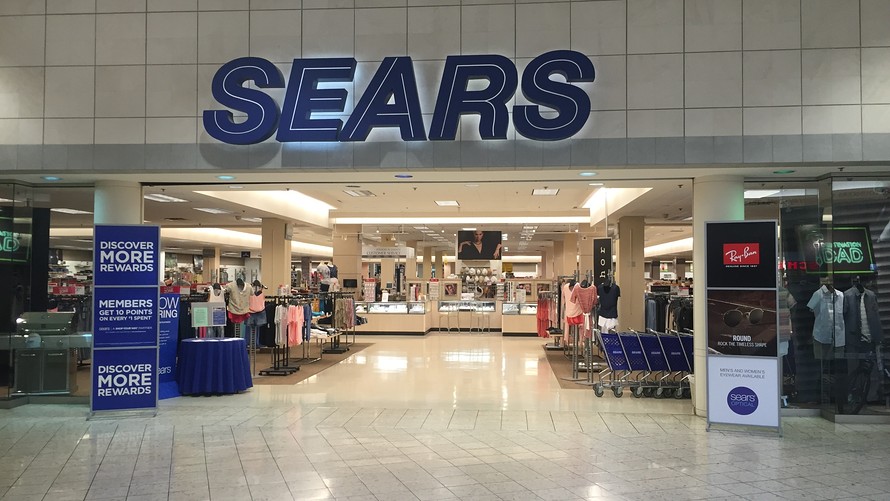By TONYA GARCIA
Source: MarketWatch, January 2019
More malls will have a ‘dark anchor’ and retirees could feel a pinch
Sears Holdings Corp.’s seemingly imminent liquidation could create some winners and many losers, according to experts.
Chairman Eddie Lampert’s $4.6 billion bid has fallen short, according to media reports, and Sears’ SHLDQ, -13.49% demise could be coming. The company is expected to ask a judge to liquidate, according to media reports. The retailer recently announced 80 additional store closures.
The large players in the appliance category, including Lowe’s Cos. LOW, +1.38% , Home Depot Inc. HD, +0.20% , and Best Buy Co. Inc. BBY, -0.63% , stand to gain shares and scale even if there’s a temporary discounting disruption, according to UBS analysts led by Michael Lasser.
“If discounting does increase in appliances, we theorize it would only be temporary,” analysts said. “This has long been a promotional category. Besides, there are unique dynamics currently unfolding in appliances given the rise in pricing products like washing machines due in part to tariffs.”
The UBS Evidence Lab found that 94% of Home Depot stores, 90% of Lowe’s stores, and 86% of Best Buy locations are within 15 minutes of Sears. Same-store sales bumps could be 150-to-250 basis points at Best Buy, 100-to-200 basis points at Home Depot, and 75-to-150 points at Lowe’s.
UBS also thinks Dick’s Sporting Goods Inc. DKS, +0.18% could get a same-store sales boost of 50-to-100 basis points in that space.
Both Cowen and UBS analysts see shopper overlap at Walmart Inc. WMT, -0.13% and Target Corp. TGT, +1.93% with both standing to gain market share.
According to Cowen data, 740 Walmart stores and 583 Targets are within a five-mile radius. In that same distance, there are 1,381 TJX Cos. TJX, +0.79% stores, including both Marshalls, Home Goods and T.J. Maxx.
In terms of household income and ages, Walmart, Burlington Stores Inc.BURL, +1.06% and J.C. Penney Co. Inc. JCP, +3.13% “most closely resemble” Sears and Kmart.
“The total annual revenue opportunity is ~$8.7bn (TTM [trailing 12-month] basis) – and realization of potential share gains will depend upon timing of and store proximities to potential closures and liquidation; also note that markdown sales could also cause near-term share losses at competitors if Sears discounts goods substantially,” wrote Cowen analysts led by Oliver Chen.
However, proximity to a Sears might not be all good news. J.C. Penney is at risk of having more locations in malls with a “dark anchor,” or a major retail space closed.
“[W]e took a deeper dive into J.C. Penney’s bricks-and-mortar fleet noting overlap with 307 Sears mall-based stores including 108 locations which already have a dark anchor today,” Cowen wrote.
“Combining these 307 mall locations with J.C. Penney’s existing exposure to 105 malls containing a current dark anchor (and no Sears) – we estimate that in a Sears bankruptcy and full-store closure event, 412 stores or 48% of J.C. Penney’s current store base would be located in malls with at least one dark anchor or nearly doubling from 25% currently.”
Anchor stores drive foot traffic, which benefits other retailers in the mall location. Given Sears’ situation, it’s unlikely it was driving a tremendous amount of traffic, said Ray Wimer, professor of practice in retail at Syracuse University. That’s already bad for mall operators, but the situation could get worse.
“It’s less attractive to people to go to because people will think the mall has no more stores in it,” he said. “It’s kind of a snowball effect, which might increase how quickly the other retailers pull out.”
Another potential loser in a liquidation scenario is Nautilus Inc. NLS, +0.45% , the home fitness equipment brand.
“While Sears does not specifically break out exercise equipment sales, we believe it generates in upward of $1 billion in annual retail revenue from fitness equipment; making it the single-largest U.S. retailer of fitness equipment for the home,” wrote SunTrust Robinson and Humphrey analysts. “This would imply the company is responsible for ~15%-to-20% of all fitness equipment sales at retail.”
Even though Nautilus has been pulling back from Sears, other retailers would be more cautious with their inventory during the holiday season.
“[W]ith the potential for broader disruption across the category/retail ordering patterns in the near-term, we believe it could be incrementally more challenging for Nautilus to recapture its longer-term financial target of 10%-to-12% sales growth and 13%-to-17% Ebitda margins,” analysts said.
Sears’ pensioners, which could number as many as 100,000, according to media reports, may also be squeezed by a liquidation.
If pensions are turned over to the Pension Benefit Guaranty Corp., a U.S. government agency whose mission is to protect retirement incomes, many pensioners will likely see their benefits reduced, said Eddie Stone, counsel for ProtectSeniors.org and an expert in retiree issues. Anyone who has a life insurance benefit would lose it.
“What I’ve learned from dealing with retirees is pensions are not used just for themselves but for their children and grandchildren,” he said.
Sears shares are down 94% for the past year. The company’s market value is about $20.8 million. The S&P 500 index SPX, -0.01% is down 6.5% for the last 12 months.
By TONYA GARCIA

